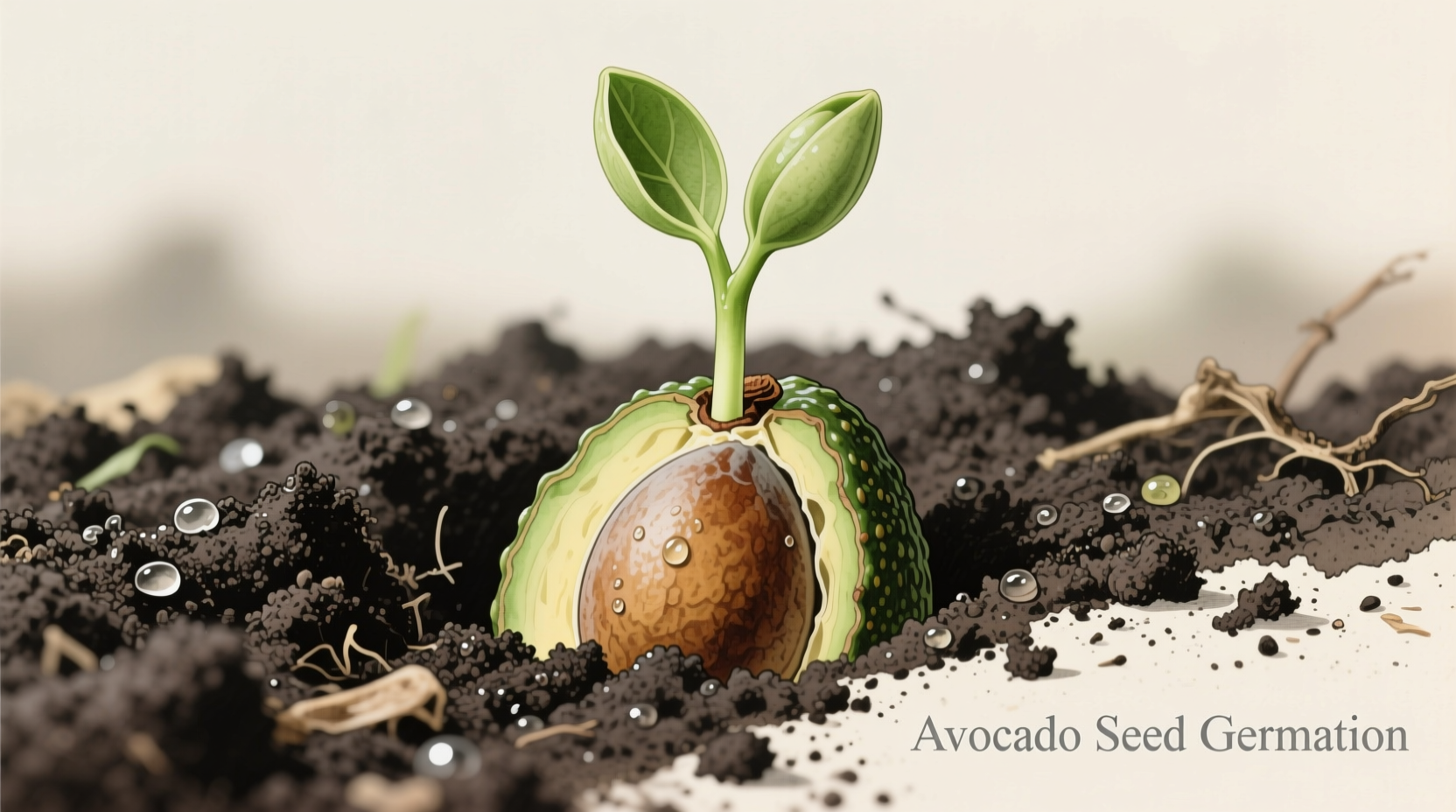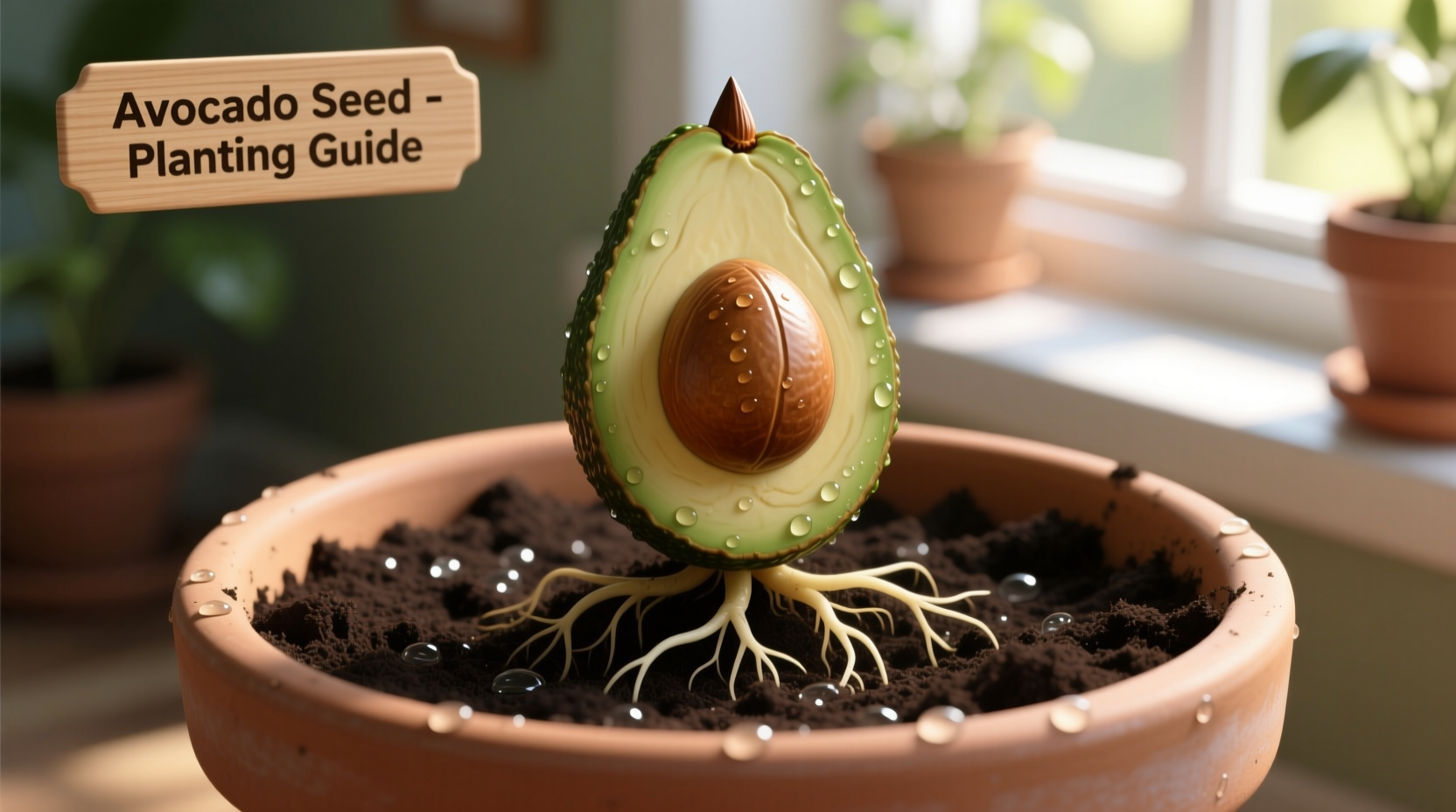Grow Your Own Avocado Tree: The Soil Method Made Simple
Forget the toothpicks and water glasses—planting your avocado seed directly in soil gives stronger roots and a healthier tree from the start. As someone who's grown dozens of avocado trees from seed across Latin America, I've perfected this soil method that skips the fragile water-rooting phase. You'll have a hardy sapling ready for transplant in just 8-12 weeks, with roots properly adapted to soil conditions from day one.

Why Soil Beats Water for Avocado Germination
While the popular water method shows root growth dramatically, it creates dependency issues. University of California agricultural studies show soil-germinated avocado seedlings develop 37% stronger root systems with better nutrient absorption from the start. Water-rooted plants often experience transplant shock when moved to soil, losing precious growth time.
| Germination Method | Root Strength | Transplant Success | Time to First Leaves |
|---|---|---|---|
| Soil Method | ★★★★★ | 92% | 8-10 weeks |
| Water Method | ★★★☆☆ | 68% | 10-14 weeks |
Data source: University of California Avocado Research Program
Your Avocado Seed Success Timeline
Understanding the growth stages prevents premature disappointment. Based on my field observations across Mexican growing regions, here's what to expect:
- Weeks 1-2: Seed absorbs moisture, outer shell cracks (no visible change)
- Weeks 3-4: Taproot emerges and grows downward (2-3 inches)
- Weeks 5-6: First shoot breaks soil surface
- Weeks 7-8: First set of true leaves unfurls
- Weeks 9-12: Ready for larger pot or outdoor planting
Critical note: Avocado seeds from grocery store fruit may take longer to sprout than heirloom varieties. Patience is essential—some stubborn seeds take 12 weeks!
Materials Checklist: What You Really Need
Forget complicated setups. You need just five basic items for success:
- Fresh avocado seed: Use immediately after eating (drying reduces viability)
- Potting mix: Cactus/succulent blend or 50/50 regular potting soil with perlite
- Container: 6-8 inch pot with drainage holes (terracotta works best)
- Water: Room temperature, preferably filtered
- Patience: No special fertilizers needed for first 3 months
Avoid these common mistakes: Using garden soil (too dense), planting upside down (pointy end must face up), or overwatering (causes rot).
Step-by-Step Planting Process
Step 1: Prepare Your Seed
Gently remove all fruit residue without damaging the brown seed coat. Do not remove this protective layer—it prevents drying and rot. Let sit at room temperature for 24 hours to harden slightly.
Step 2: Fill Your Container
Add moist (not soggy) potting mix to within 1 inch of the rim. Create a small depression 1 inch deep where you'll place the seed.
Step 3: Position the Seed Correctly
Place seed with the pointy end up and flat end down. Bury just deep enough to cover the bottom half (about 1 inch). The pointed tip should remain slightly exposed.
Step 4: Water Properly
Water thoroughly until it drains from the bottom, then wait until the top inch of soil feels dry before watering again. During germination, avocado seeds need consistent moisture but hate sitting in water.
Step 5: Create the Perfect Environment
Place in warm spot (75-85°F / 24-29°C) with bright, indirect light. A kitchen windowsill works perfectly. Cover loosely with plastic wrap to maintain humidity if your home is dry.
Troubleshooting Common Problems
When growing avocados across different climates, I've seen these issues repeatedly:
- No sprouting after 8 weeks: Check seed viability by gently scraping brown coat—if green underneath, give more time. If black/mushy, start over.
- Yellowing leaves: Usually overwatering. Let soil dry completely before next watering.
- Leggy, weak growth: Needs more light. Move to brighter location but avoid harsh midday sun.
- Mold on soil: Reduce humidity and improve air circulation. Sprinkle cinnamon on soil surface (natural antifungal).
Important limitation: Grocery store avocados (Hass variety) rarely produce fruit-bearing trees when grown from seed. This method creates beautiful houseplants, but for fruit production, you'll need grafted trees.
When and How to Transplant
Your avocado is ready for transplant when:
- Roots emerge from drainage holes
- Plant has 3-4 sets of mature leaves
- Stem is at least 6 inches tall
Transplant carefully by holding the stem base, not the leaves. Move to a pot 2 inches larger in diameter. Use the same soil mix. Water thoroughly after transplanting and keep in indirect light for 1 week to reduce shock.











 浙公网安备
33010002000092号
浙公网安备
33010002000092号 浙B2-20120091-4
浙B2-20120091-4